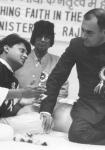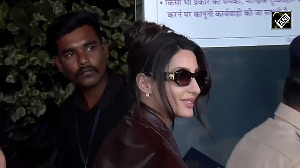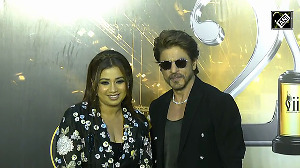 For all these years, a golden death mask covering the face of young Egyptian monarch Tutankhamun has been a familiar image. Eighty five years since British treasure-seeker Howard Carter had located the 2000-year-old tomb, the true face of the pharaoh has finally been revealed.
For all these years, a golden death mask covering the face of young Egyptian monarch Tutankhamun has been a familiar image. Eighty five years since British treasure-seeker Howard Carter had located the 2000-year-old tomb, the true face of the pharaoh has finally been revealed.The true face of the 19-year-old monarch was put on view in his underground tomb at Luxor on Sunday, when the linen-wrapped mummy was removed from its stone sarcophagus for display in a climate-controlled glass box.
The display comes at the end of a two-year restoration of the mummy itself, which was badly damaged by Carter and his team as they removed the death mask and other jewels decorating the body.
It was cut into 18 separate pieces in the process. The restoration was intended to protect the mummy for the future as there were fears that its condition was deteriorating with large number of tourists visiting the tomb.
'The humidity and heat caused by people entering the tomb and their breathing will change the mummy to a powder,' The Independent
The face, put to display, is a lot less idealised than the lustrous and splendid golden mask. It is shrivelled and leather-like from the embalming process.
However, it is a lot more human and exhibits one very human characteristic in particular. The mummified face reveals that the young king had buck teeth and the 'overbite' which was characteristic of the Thurmosid royal line to which Tutankhamun belonged.
There have been lingering questions about the death of young pharaoh and his royal lineage. Several books and documentaries have been written about the 12th ruler of ancient Egypt's 18th dynasty.
John Taylor, an assistant keeper at the British Museum's department of ancient Egypt and Sudan, said tourists will not be the only ones to benefit from putting the mummy on display in a climate-controlled case.
Image: The face of pharaoh Tutankhamun is displayed in a climate-controlled case at his tomb in the Valley of the Kings, close to Luxor, 500 kms south of Cairo.
Photograph: Cris Bouroncle/AFP/Getty Images






 © 2025
© 2025